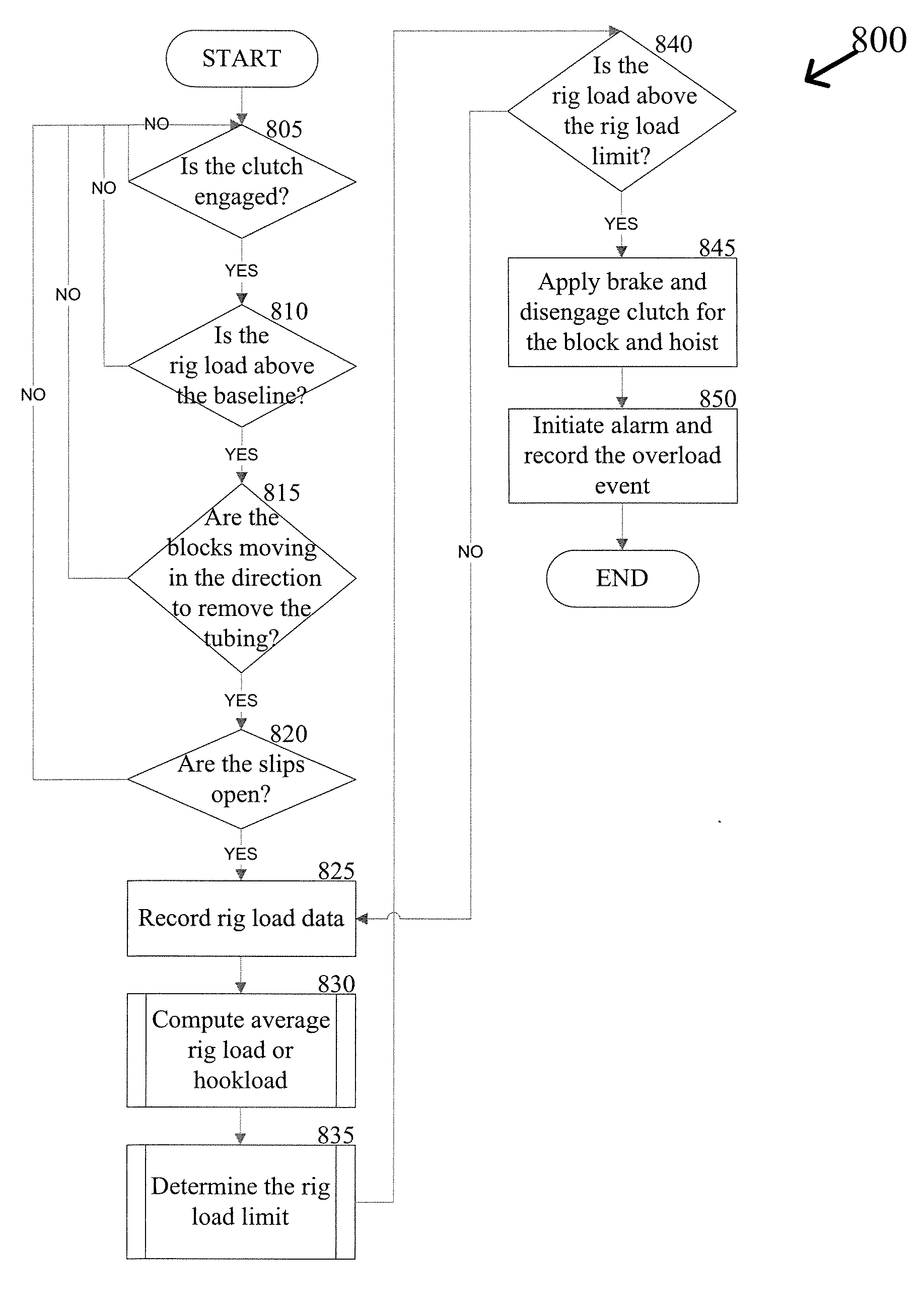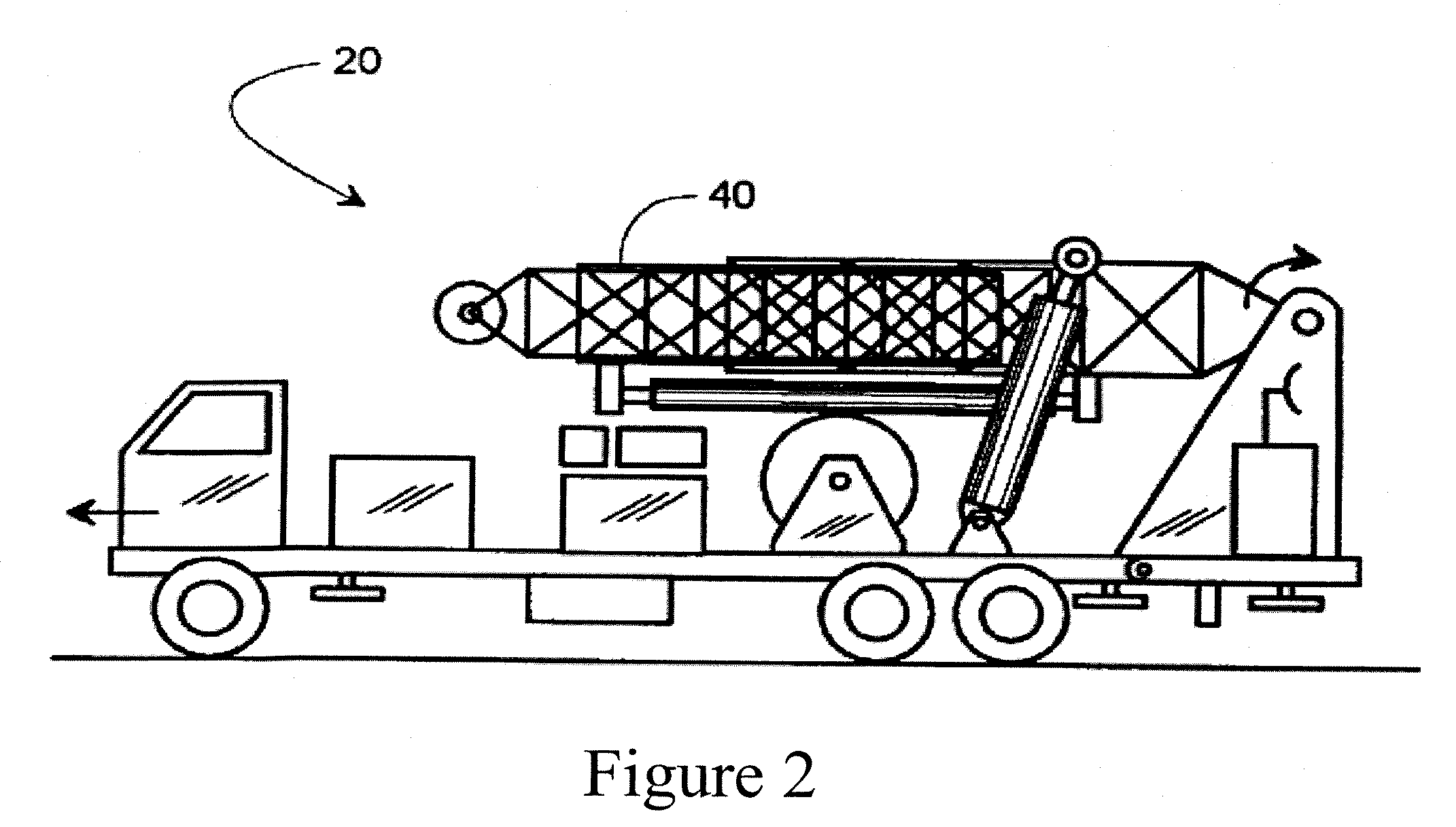Method and System for Controlling a Well Service Rig Based on Load Data
a technology of load data and service rig, which is applied in the direction of survey, wellbore/well accessories, hoisting equipment, etc., can solve the problems of reduced safety chances caused by tubing or rod hanging or getting caught in the wellbore, increased time, and reduced speed of the block or hoist, so as to improve the ability to prevent damage to the service rig and injury to the workers around the well head. , the effect of increasing the reaction tim
- Summary
- Abstract
- Description
- Claims
- Application Information
AI Technical Summary
Benefits of technology
Problems solved by technology
Method used
Image
Examples
Embodiment Construction
[0028]Exemplary embodiments of the invention will now be described in detail with reference to the included figures. The exemplary embodiments are described in reference to how they might be implemented. In the interest of clarity, not all features of an actual implementation are described in this specification. Those of ordinary skill in the art will appreciate that in the development of an actual embodiment, several implementation-specific decisions must be made to achieve the inventors' specific goals, such as compliance with system-related and business-related constraints which can vary from one implementation to another. Moreover, it will be appreciated that such a development effort might be complex and time-consuming, but would nevertheless be a routine undertaking for those of ordinary skill in the art having benefit of this disclosure. Further aspects and advantages of the various figures of the invention will become apparent from consideration of the following description ...
PUM
 Login to view more
Login to view more Abstract
Description
Claims
Application Information
 Login to view more
Login to view more - R&D Engineer
- R&D Manager
- IP Professional
- Industry Leading Data Capabilities
- Powerful AI technology
- Patent DNA Extraction
Browse by: Latest US Patents, China's latest patents, Technical Efficacy Thesaurus, Application Domain, Technology Topic.
© 2024 PatSnap. All rights reserved.Legal|Privacy policy|Modern Slavery Act Transparency Statement|Sitemap



